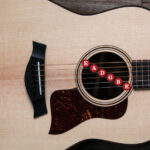For left-handed guitarists, the quest for the perfect instrument has often been a journey filled with compromise. Historically, lefties have faced a scarcity of options, often having to adapt to instruments designed for right-handed players. While the world has become more accommodating, the availability of left-handed guitars still lags behind, making up a small fraction of the market despite left-handers representing approximately 10% of the population. Legendary players like Jimi Hendrix famously flipped right-handed Stratocasters, while others like Robert Fripp learned to play right-handed, showcasing the determination of left-handed musicians to overcome these limitations.
Today, while dedicated left-handed models are more common, sometimes the ideal guitar – with its perfect tone and feel – might just happen to be a right-handed instrument. When that perfect guitar comes along, handedness doesn’t have to be a barrier. Converting a right-handed acoustic guitar to a left-handed setup is a viable solution, allowing lefties to access a wider range of instruments. While it’s more than just restringing, a skilled technician can perform a conversion with precision. This article explores the process of a recent left-handed conversion project, detailing the steps involved in transforming a right-handed Martin guitar.
The project began with a beautiful, high-quality Martin guitar. Despite being a right-handed model, its exceptional sound captivated a left-handed player who decided to pursue a conversion. The crucial aspect of converting an acoustic guitar lies in addressing the bridge saddle. Acoustic saddles are intentionally angled to compensate for the varying gauges of guitar strings, ensuring accurate intonation across the fretboard. Simply reversing the strings on a right-handed saddle would lead to significant intonation problems, with bass strings playing sharp and treble strings flat.
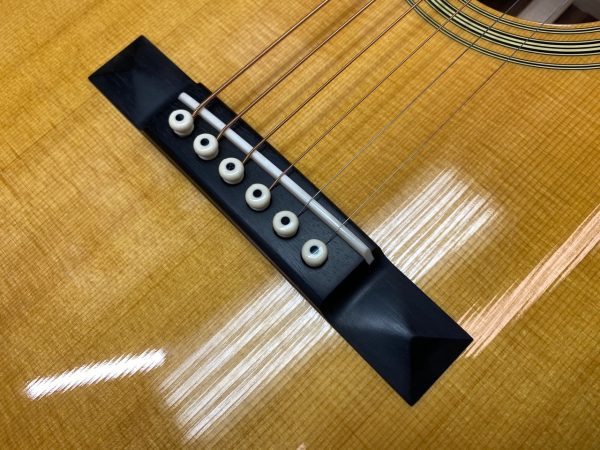 Original right-handed bridge saddle before conversion
Original right-handed bridge saddle before conversion
To rectify this, the first step involves creating a new saddle slot with the correct left-handed orientation. This requires filling the existing right-handed slot. A piece of ebony, carefully chosen to match the bridge’s color, was shaped to fit snugly into the original saddle slot. After gluing the ebony fill in place, it was meticulously carved and sanded flush with the bridge surface, preparing it for the new left-handed slot.
 Ebony fill piece being shaped for the saddle slot
Ebony fill piece being shaped for the saddle slot
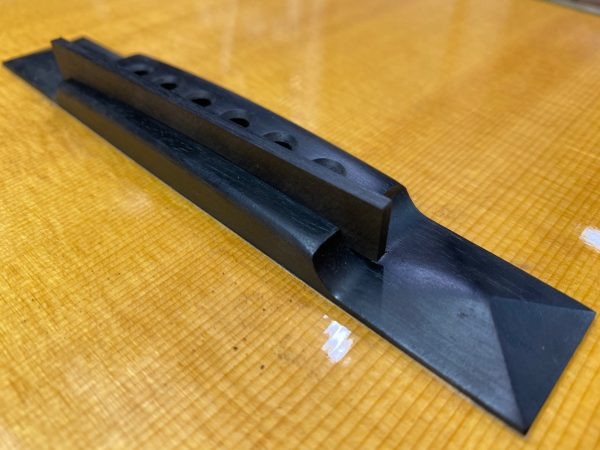 Ebony fill glued into the original saddle slot
Ebony fill glued into the original saddle slot
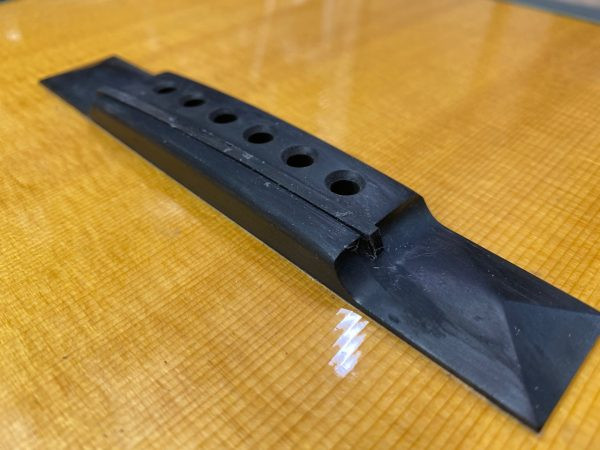 Bridge after sanding the ebony fill flush
Bridge after sanding the ebony fill flush
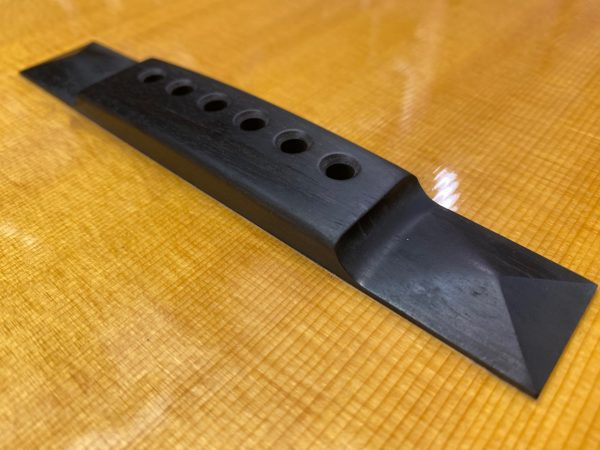 Close-up of the bridge with filled saddle slot, ready for new slot
Close-up of the bridge with filled saddle slot, ready for new slot
Cutting a new saddle slot on a pre-existing bridge demands precision and accuracy. The position and angle of this slot are paramount for correct intonation. Traditionally, intricate routing jigs and careful scale length calculations were employed for this task. While skilled craftsmanship can achieve excellent results, technological advancements offer enhanced precision. In this conversion, a PLEK machine was utilized to cut the new saddle slot. Precise measurements were programmed into the PLEK, enabling it to carve the slot in the exact desired location and angle for left-handed intonation.
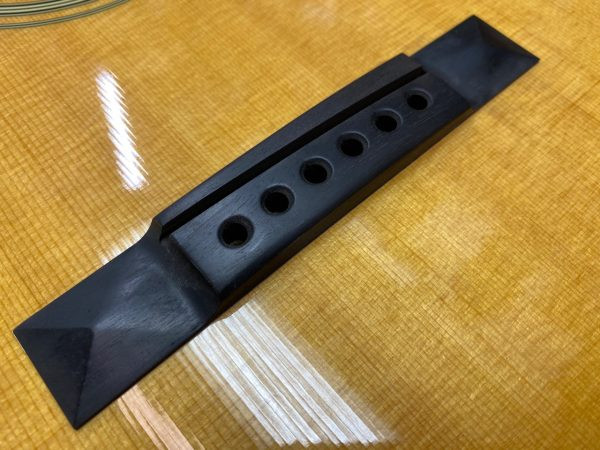 PLEK machine cutting the new left-handed saddle slot
PLEK machine cutting the new left-handed saddle slot
The PLEK machine streamlined a potentially time-consuming and critical step, resulting in a perfectly positioned saddle slot. The bridge now appeared as if it were originally designed for a left-handed guitar. While automated tools like the PLEK are invaluable, they are just one part of the guitar technician’s toolkit. Expertise and handcraftsmanship remain essential, especially in tasks requiring a more nuanced approach. Creating a new nut and saddle, typically from bone, falls into this category. These components are almost exclusively crafted by hand, blending technical skill with artistry. Shaping raw pieces of bone into precisely fitted nuts and saddles is a rewarding aspect of guitar work.
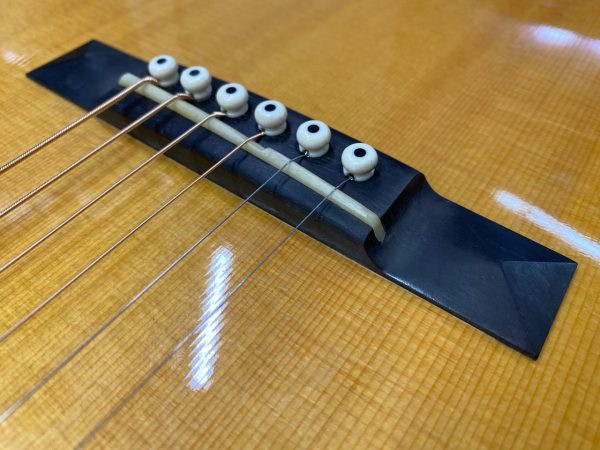 Hand-carved bone nut for left-handed conversion
Hand-carved bone nut for left-handed conversion
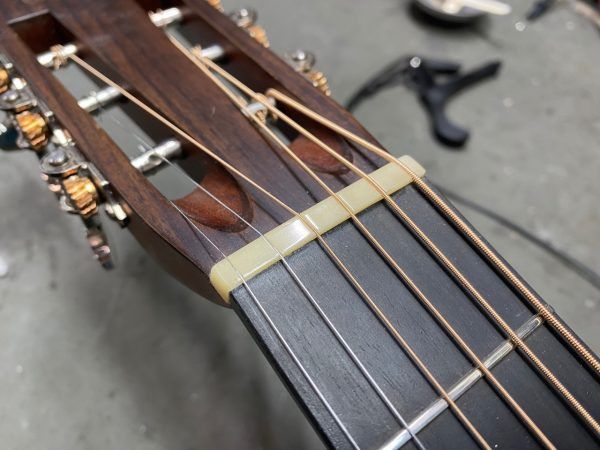 Hand-carved bone saddle for left-handed conversion
Hand-carved bone saddle for left-handed conversion
To complete the conversion, side dot markers were added to the opposite side of the neck. These markers are crucial for left-handed players to navigate the fretboard effectively. While not visually documented in this project, the addition of side dots ensures comfortable and intuitive playability for the left-handed guitarist. Finally, the newly converted left-handed guitar underwent a complete setup, including fret leveling using the PLEK machine to ensure optimal playability. Even for a right-handed player, attempting a simple C major chord on a left-handed guitar highlights the challenges lefties face when forced to play right-handed instruments. However, with careful modifications like those described, converting a right-handed acoustic guitar to left-handed is entirely achievable, opening up a wider world of guitar options for left-handed musicians.

